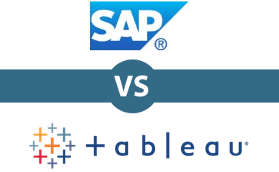A few months ago, we wrote about the end of life of SAP Business Objects Dashboards. Across the BI world, many of our peers are tearing…
Moving your Mining FMS Dashboards from SAP Dashboards to Tableau
A few months ago, we wrote about the end of life of SAP Business Objects Dashboards.
Across the BI world, many of our peers are tearing their hair out at the situation (it is definitely frustrating no longer having a “one stop shop” BI platform). The reality is however, that unless there is a change in strategy from SAP business intelligence platform, the software SAP Dashboards will cease to launch at the end of 2020.
For those of you still running Flash-based dashboards for your mining technology data… you really need to get those over to HTML as quickly as possible (we actually prefer the HTML dashboards quite a lot more!).
Less well talked about is Explorer is going too. For sites that have grown used to this awesome tool, loosing it will be a big blow. Cloud-based replacements are largely unpalatable for many mining operations (think security and also connectivity at remote operations).
Where are Mining Companies Heading for their Business Intelligence?
A number of the mining operations we work with are now moving towards Tableau for their mining technology dashboarding/analytics; whilst maintaining SAP business objects Webi for their standard reporting.
Web Intelligence with properly-designed universes remains a hugely powerful tool for BI reporting (quite frankly once you have accustomed to using a universe as the semantic layer, its very hard to use anything else).
How does Tableau Measure Up?
Really rather well.
Tableau handles large volumes of data with no apparent performance degradation. The visualisations are crisp, modern and effective. In short, we think Tableau is a fabulous tool.
Is Getting the Data as Easy as SAP Business Objects Dashboards?
If you are pulling straight from a fleet management system database without the ability to build appropriate views or tables (i.e. you don’t “own” the database) then you may find Tableau a little tricky at first.
This is because of Tableau’s lack of a semantic layer (i.e. a universe). Building a complex SQL statement can make this daunting and you are likely to encounter errors along the way with the wrong data being extracted.
This is where InfoSol’s InfoBurst Tab provides the perfect bridge between the two products. For many sites using Webi to populate their mining operations and asset health dashboards, the same feeder reports can be plugged straight into Tableau. Great eh?
Mining Technology: Our Approach for Mines Moving from Dashboards to Tableau
Our approach with our sites is this:
- Review all their dashboards – kill any that are no longer needed.
- Can we move any of them to Webi? (The answer is often yes!).
- Ok, so we do really need a dashboard, lets work out a strategy to move to Tableau.
One final note we should add here is that flash will be around till the end of 2020.
You have two years to figure this out, so a considered approach is possible – taking into account many factors, including cost!
Stay Tuned for More SAP Dashboards News in the New Year
The end of the year is approaching and we are wrapping up a number of projects, so whilst this month’s Mine Tech Services blog is rather short, we hope it has provided a couple of pointers on how you can move forwards.
In 2019, we will be blogging in more detail on this topic.
If you’d like more information on MTS Mining Operations Solutions & Projects, get in touch at [email protected]
#MiningTechnology #miningdigitalstrategy #industry40 #xcelsius #Tableau #Infosol #digitalroadmap #changemanagement
[DISPLAY_ULTIMATE_SOCIAL_ICONS]

